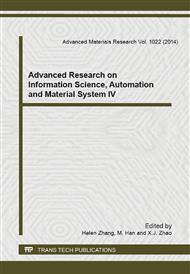[1]
W.H. Emling and S. Dawson, Mold Instrumentation for Breakout Prevention and Control, ISS Steelmaking Conf. Proc. (1991), 161~181.
Google Scholar
[2]
K. Sorimachi, M. Kuga, M. Saigusa etal. Influence of mold powder on breakout caused by sticking. Fachberichte Huttenpraxis Metallweiterverarbeitung, 1982(20), 4:244~247.
Google Scholar
[3]
Y. Mimura. Sticking-type breakouts during the continuous casting of steel slabs. Masters Thesis, University of British Columbia, 1989, 7.
Google Scholar
[4]
M. Emi. The mechanisms for sticking-type breakouts and new developments in continuous casting mold fluxes. AISI Conf, Dallas 1990, 5.
Google Scholar
[5]
W.H. Emling, S.D. Mis and D.J. Simko. A thermocouple-based system for breakout prevention and practice development. ISS Steelmaking Conf. Proc. 1988, 183~188.
Google Scholar
[6]
S. Itoyama, M. Washio and H. Nishikawa etal. Reduction of friction force in mold and prevention of sticking-type breakout for high-speed continuous casting of slabs. Trans. ISIJ, 1988(28):78~85.
DOI: 10.2355/tetsutohagane1955.74.7_1274
Google Scholar
[7]
Blazek K.E. The research on the sticking breakout and the suspended breakout. The 4th international continuous casting conference, Brussels , 1988: 215~227.
Google Scholar
[8]
I.G. Saucedo and K.E. Blazek, Inland Steel's Breakout Prevention System, ISS PTD Conf Proc. (1990), 83–92.
Google Scholar
[9]
Sumio Kobayashi, Tsuneaki Nagamichi and Koki Gunji. Numerical analysis of solute redistribution during solidification accompanying δ / γ transformation, Transaction ISIJ, 1988(28):543~552.
DOI: 10.2355/isijinternational1966.28.543
Google Scholar
[10]
H. Nakato, M. Ozawa, K. Kinoshita etal. Factors affecting the formation of shell and longitudinal cracks in mold during high-speed continuous casting of slabs. Trans ISIJ, 1984:957~965.
DOI: 10.2355/isijinternational1966.24.957
Google Scholar
[11]
Yang Xiaojiang, HAO Huaqiang, Analysis and prevention on sticking of thin slab casting. Research on Iron&Steel, 2004(6): 4-9.
Google Scholar


